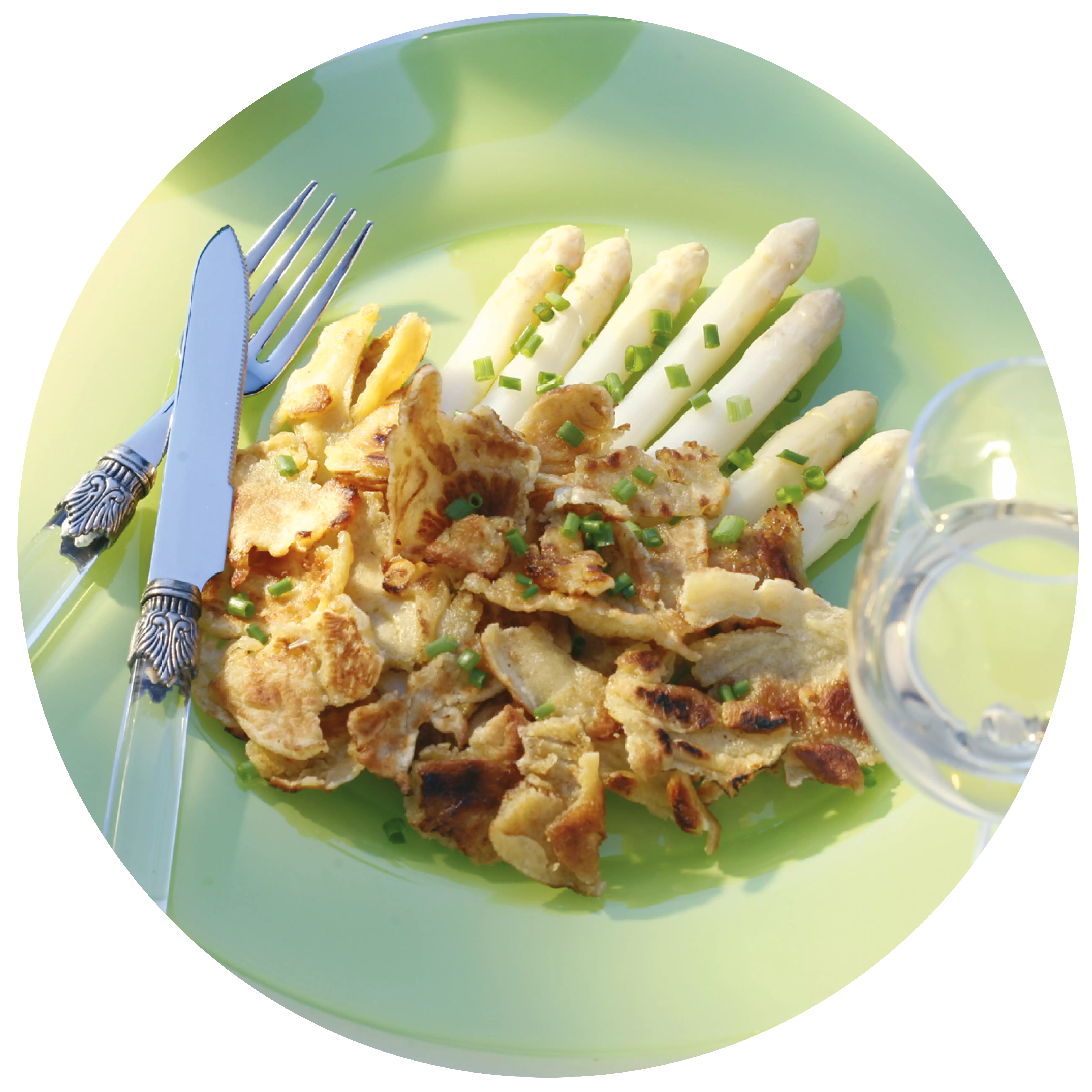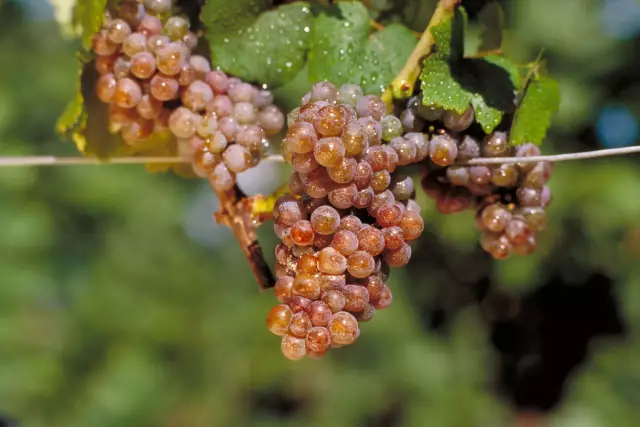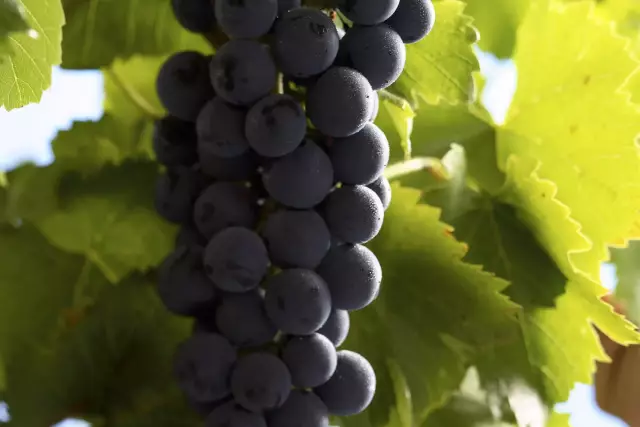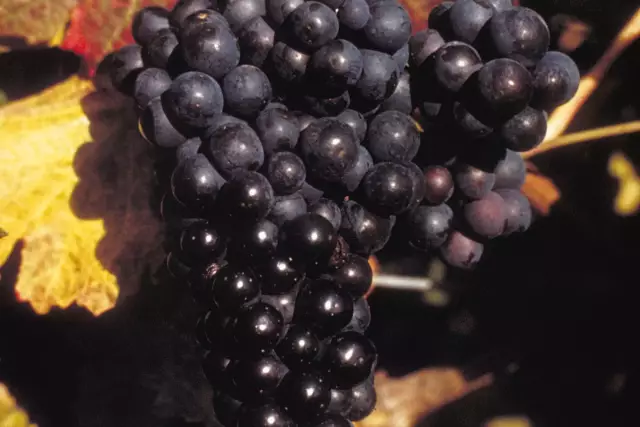Riesling
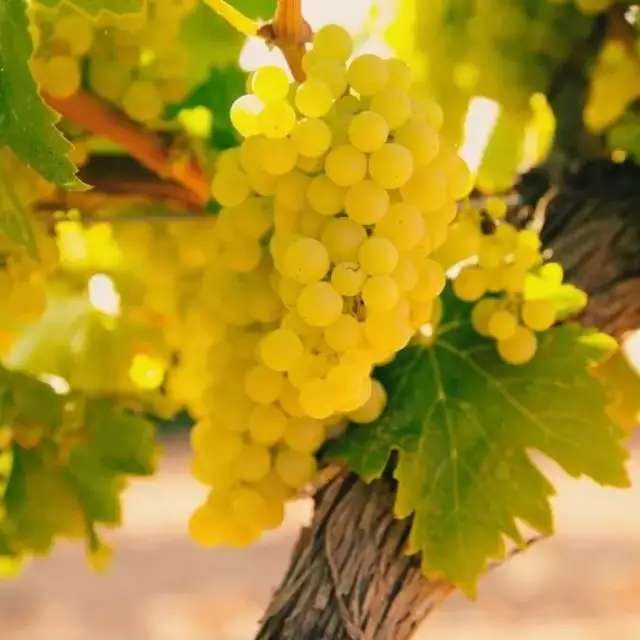
Riesling is one of the highest quality grape varieties, owing its worldwide reputation to its lively acidity and diverse aromas shaped by the terroir.
Facts
-
40 percent
of global production in Germany
-
24.233 ha
Vineyard area 2024
-
13 March
Riesling-Birthday
Cultivation
The Riesling is a slowly ripening grape variety whose defining element is its fruity acidity. It is therefore predestined for the northern growing regions, where it completes its ripening in the late autumn sun. It makes the highest demands on the location (energy), but low demands on the soil. Depending on the location (soil type and microclimate), it produces very differently nuanced wines. Optimal conditions are offered by the heat-retaining stony steep slopes along the river valleys.
Significance
It is considered the flagship of German viticulture. Like no other grape variety, Riesling determines the worldwide image of the 13 German wine-growing regions. Germany is considered the home of Riesling - after all, with 24,233 hectares (2024), about 40% of all Rieslings in the world are grown in German vineyards.
In the Rheingau, Riesling accounts for around 2.412 ha (2024), almost 78% of the available vineyard area there. The largest German Riesling growing region is the Pfalz (approx. 5.926 ha), followed by Rheinhessen (approx. 5,438 ha) and the Mosel (approx. 5,266 ha). Larger Riesling growing areas can also be found in Württemberg, on the Nahe and in Baden.
Development and taste
Riesling wines are available in all quality levels and flavours. Some are matured in traditional wooden barrels. In addition to uncomplicated everyday wines, there is a rich selection of Prädikat wines. In the higher quality levels, residually sweet or noble sweet wines are more common, but many quality or Kabinett wines (especially in the northern growing regions) are also balanced with a subtle sweetness to compensate for the high acidity.
The "typical" Riesling is pale yellow in colour, tending towards greenish-yellow, with a predominantly peach or apple aroma and a racy acidity in the mouth. Rieslings from slate soils are said to have a mineral note, some wines smell of flint, age-ripened growths often have an interesting petrol tone.
The natural acidity offers good potential for sparkling. Thus, we find vintner's sparkling wines from Riesling in many wineries. Edelsüße Beerenauslesen or Eisweine are among the most highly traded German wines, also internationally. Rieslings should be drunk at the earliest one year after the harvest; many only reach their optimal drinking maturity after a few years. The shelf life of top wines is almost unlimited.
History
The early spread of Riesling, with first evidence dating back to the 15th century, the growth, the size of the grape berries, the long ripening period and frost resistance show its relationship to wild vines. The longest Riesling tradition is probably with the winegrowers in the Rheingau and on the Moselle; there are historical documents from there that can be dated to 1435 and 1465 respectively. On 13 March 1435, the word Riesling was mentioned in a document for the very first time. Evidence of its distribution in what is now Rheinhessen and the Palatinate dates from the end of the 15th century and the first half of the 16th century.
Riesling was one of the grape varieties recommended by the state not only today, but also in the 17th and 18th centuries. There is still some debate about the derivation of the name: is the word Riesling associated with trickling, with brisk acidity, with "noble rice" or with Rusling (dark wood)? Internationally it is known as "Rheinriesling", for Baden Riesling wines the synonym "Klingelberger" may be used. Our "Weißer Riesling" has nothing in common with Welschriesling, which is cultivated in Austria, Italy and Slovenia, among other countries.
The name researcher Prof. Dr. Jürgen Udolph has published a scientific article on the origin of the name "Riesling" under the title "Woher hat der Riesling seinen Namen".
Are Welschriesling and Schwarzriesling related to the classic Riesling?
Welschriesling is a white grape variety whose roots are still unclear today. In France, the red grape variety Schwarzriesling is part of the Champagne cuvée.
White asparagus with pancake strips Asparagus with "Kratzete"
White asparagus with pancake strips and champagne butter sauce.
- 1kg Weißer Spargel
- 200g Mehl
- 4 Eier
- 150ml Milch
- 1TL Butterschmalz zum Braten
- 2EL Butter
- 1 Zitrone
- 1 Prise Zucker
- 1-3 Schnittlauchröllchen zum Garnieren
- 1 Für die Soße:
- 150g Butter
- 50ml Sahne
- 50ml Sekt
- etwas Salz und Pfeffer
Mix the flour with the eggs, milk and a pinch of salt to make a smooth pancake batter. Leave to soak for 30 minutes.
In the meantime, peel the asparagus and cook in salted water with 2 tbsp butter and a pinch of sugar until al dente. Drain well and keep warm.
<p
<p>Pour the pancake batter in batches into hot clarified butter
.
pour into hot clarified butter. When the underside is browned, use a fork to scrape into pieces. Finish frying until the pieces are golden yellow.
For the champagne-butter sauce, bring the cream to the boil, reduce slightly and stir in the cold pieces of butter (walnut-sized). Add the sparkling wine and season to taste with salt and pepper.
<p
<p>Arrange the asparagus on pre-warmed plates. Add the kratzete, drizzle with the sauce and garnish with chives.
<p
<p>Wine recommendation:
A mild and dry Gutedel or a delicate Kabinett wine from Riesling or Pinot Blanc.
- Gutedel (trocken)
- Riesling (brut)
- Pinot Gris (brut nature)
